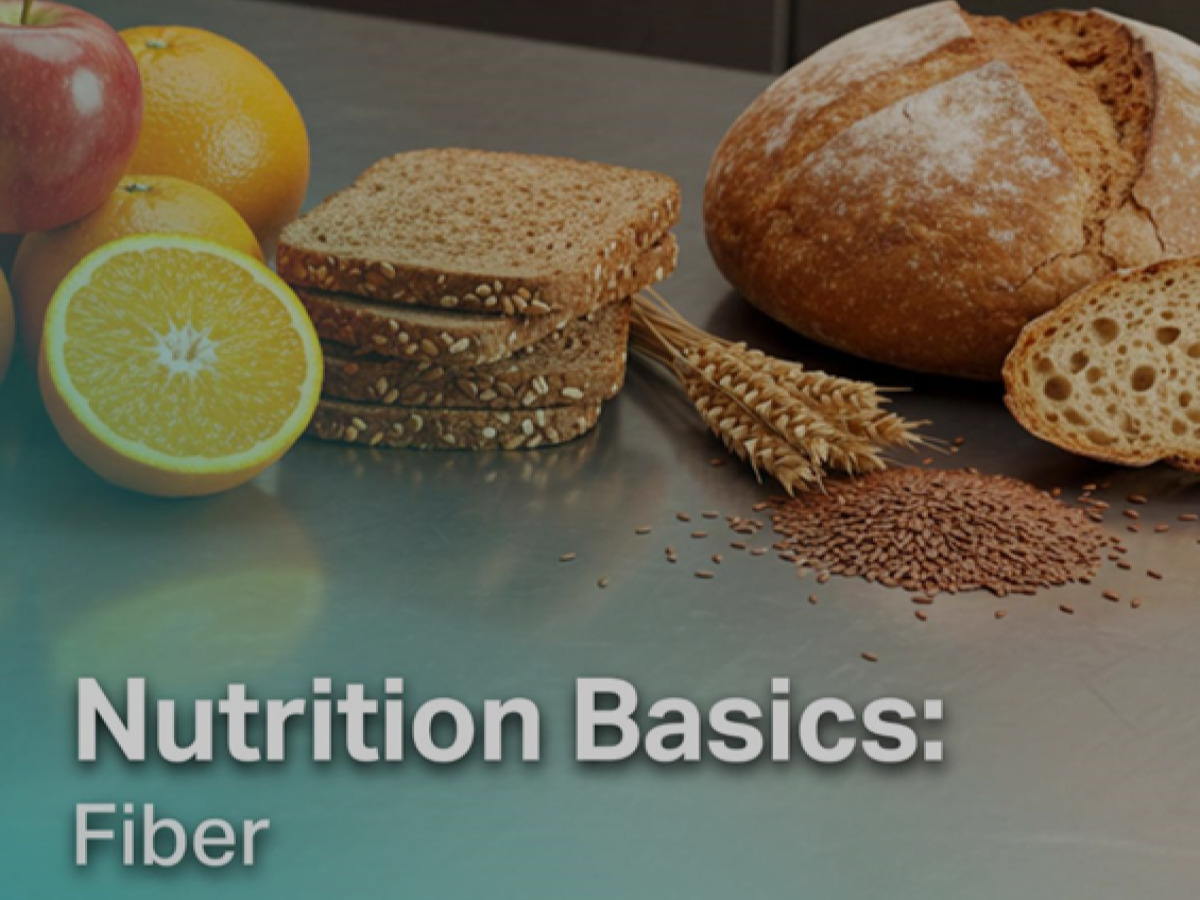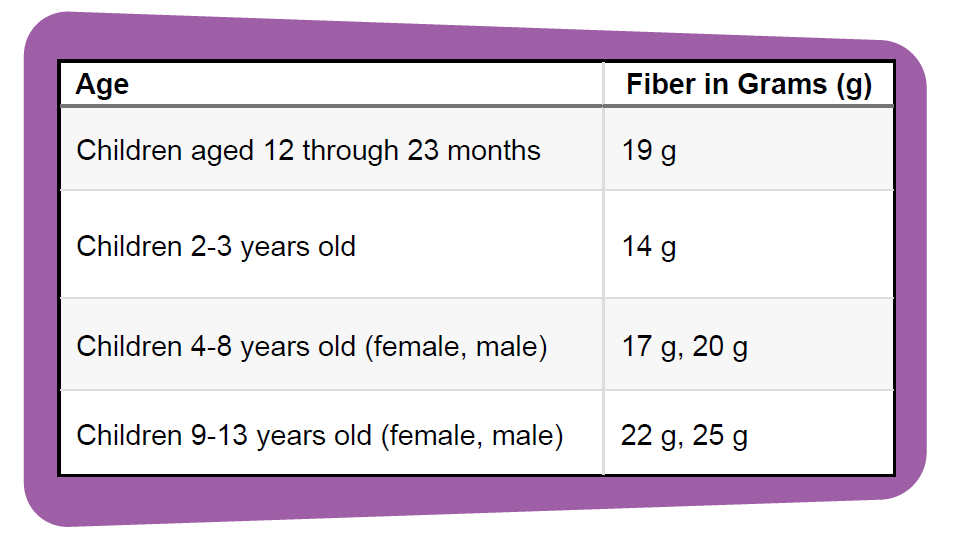Nutrition Basics: Fiber
Institute of Child Nutrition (ICN)
February 12, 2025

You may know that fiber is important, but do you understand why or how much you need? This Mealtime Memo from our partners at the Institute of Child Nutrition covers fiber sources, health benefits, and strategies to increase fiber intake.
What is Dietary Fiber
Dietary fiber is a plant-based carbohydrate the body cannot digest or absorb. Fiber can help improve colon health, control blood sugar levels, lower cholesterol levels, and may reduce the risk of intestinal diseases, heart disease, diabetes, and some cancers. Adequate fiber intake in children’s diets supports healthy digestion, helps maintain steady energy levels throughout the day, and promotes feelings of fullness that assist with healthy weight management. There are two types of fiber: soluble and insoluble.
Soluble fiber dissolves in water and forms a gel. The gel-like substance helps:
- Bind cholesterol, removing it from the body and lowering cholesterol levels.
- Slow digestion, assisting in the regulation of blood sugar levels.
Insoluble fiber does not dissolve in water but draws water in like a sponge. It helps:
- Promote digestion by increasing the movement of “bulk waste” out of the body’s digestive system.
- Reduce the risk of constipation, hemorrhoids, and diverticulosis.
Good Sources of Fiber
- Whole grains such as whole barley, whole rye, and whole wheat
- Whole grains have not been processed to remove the grain’s outer layers, where fiber and other nutrients are found.
- Vegetables such as avocados, beans, peas, potatoes, lentils, and carrots
- Eating the skin of potatoes also increases fiber intake.
- Fruits such as apples, berries, oranges, and pears
- Leave the peel on fruits such as apples and pears to get the most fiber.
- Nuts and seeds such as almonds, chia seeds, and flax seeds
Good Sources of Soluble Fiber
- Apples, blueberries, strawberries, and citrus fruit
- Barley
- Beans, peas, and lentils
- Chia seeds
- Nuts
- Oats, oat bran
- Raw vegetables (carrots, Brussels sprouts, and potatoes)
Good Sources of Insoluble Fiber
- Apples and pears (with peels)
- Beans, peas, and lentils
- Raw vegetables (cauliflower, avocado, spinach, and potatoes)
- Nuts and seeds
- Whole grains (whole barley, brown rice, quinoa, and wild rice)
- Whole wheat products (wheat bran and whole wheat flour)
Plants have varying levels of insoluble and soluble fiber. To benefit from both types, consume high-fiber foods such as fruits, vegetables, whole grains, legumes, nuts, and seeds. Examples of good sources of fiber include:
- 1 cup fresh raspberries (8 grams)
- ½ cup cooked black beans (7.5 grams)
- 1 large pear with skin (7 grams)
- 1 cup cooked whole wheat spaghetti (6 grams)
- 1 cup boiled broccoli (5 grams)
- 1 ounce almonds (3.5 grams)
Highly processed foods such as juice, white bread, and non-whole grain cereal and pasta are low in fiber. The grain-refining process removes the outer coat (bran) from the grain, which lowers its fiber content.
- For example, one medium apple with a peel contains 4.4 grams of fiber, while 4 ounces of apple juice contains no fiber.
How Much Fiber is Recommended?
There is no need to track soluble vs. insoluble fiber intake. Instead, focus on the total amount of fiber to eat daily. The Dietary Guidelines for Americans recommends people aged two and older get 14 grams of fiber for every 1,000 calories in their daily diet. Below is a chart with the daily nutritional goals of fiber for children.

Tasty Ways to Include Fiber Into Menus
Whole Grains
- Replace refined grains (like white rice, pasta, bread) with whole grains (like brown rice, quinoa,whole wheat bread).
- When baking, replace some or all flour with whole wheat flour.
- Use whole grain oats in meatloaf.
Vegetables and Fruits
- Serve whole fruits and vegetables (with the peel if possible) instead of juice.
- Top pancakes, oatmeal, or cereal with fresh fruit like berries or bananas.
- Add veggies to scrambled eggs, sandwiches, casseroles, stir-fried dishes, pasta, pizza, and soup.
- Substitute beans, peas, or lentils for meat 2-3 times a week. Use them in chili, soups, stews, salads, and casseroles. Blend chickpeas into hummus.
Nuts and Seeds
- Add chopped nuts or seeds to salads, cereal, or yogurt. Sprinkle ground flaxseed or chia seeds into smoothies or onto cooked vegetables.
Read Labels
One way to help increase your fiber intake is to understand food package labels. The Nutrition Facts label has a product’s overall dietary fiber amount listed in grams under Total Carbohydrate. To the right of this amount is the % Daily Value (DV) that tells you how much of a nutrient a food includes compared to how much is needed each day.
- If a food package has at least 20% of the recommended daily value, it is high in fiber; if a food is a good source of fiber, the food label has between 10–15% of the recommended daily value.
- Another way to choose foods higher in fiber is to look at the number of grams of fiber in a serving. Choose foods with at least 3 grams of fiber per serving as a good source of fiber and strive for 5 grams per serving as an excellent source.
For more information, read the Institute of Child Nutrition’s February Mealtime Memo.
